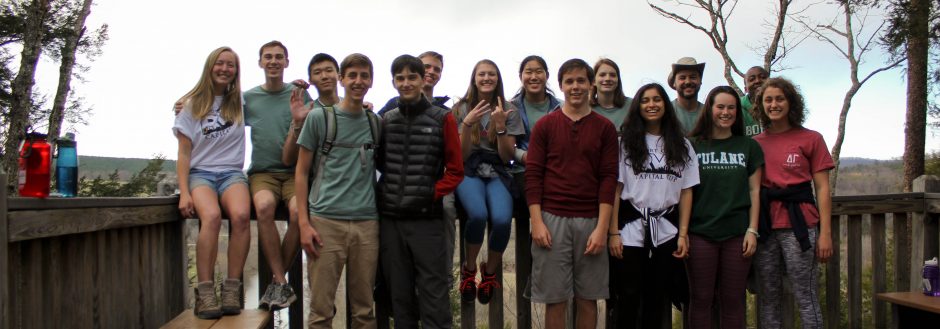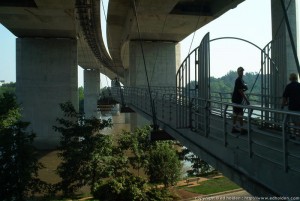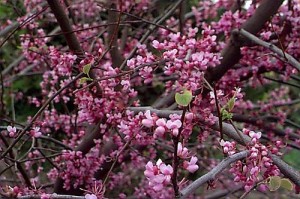In almost all of my blog posts, I have commented on some human failing or on something untouched that is beautiful. I wrote about place-blindness, noting that so many of our species either don’t care or are simply unaware of their surroundings. I wrote about the ways in which Europeans mistreated American Indians and how disturbing I find it. I wrote about pollution, who pollutes, and why they do it. Though my blog posts did not have an overarching negative tone, as I always seemed to find something positive to consider, reading over them I felt as though I was perhaps too hard on us humans. Something David Haskell read from his book got me thinking about the way I view humanity and its place in the nature:
“But to love nature and to hate humanity is illogical. Humanity is part of the whole. To truly love the world is also to love human ingenuity and playfulness. Nature does not need to be cleansed of human artifacts to be beautiful or coherent. Yes, we should be less greedy, untidy, wasteful, and shortsighted. But let us not turn responsibility into self-hatred. Our biggest failing is, after all, lack of compassion for the world. Including ourselves” (Haskell 158).
This passage reminded me of the fact that, though it is important to be environmentally conscious and resist the devastation of our earth, it is also important to have a healthy love of humanity that does not “turn responsibility into self-hatred.” Though I normally don’t think of humans as existing outside of the natural world, I have been torn as to how to reconcile my love for nature with the human destruction and development that I benefit from and take part in every day. I seem to have simply overlooked the many fascinating and positive things about humans that make us an amazing feat of nature. Though I do love the earth and am concerned and ashamed at how we have been treating it, rereading this Haskell quote, I found this flaw in my thinking to be a theme in my posts.
A few weeks ago I took a day trip to Shirley Plantation, in Charles City, Virginia. Though I knew the visit would be a pleasant way to get off campus and learn more about the history in the area, I didn’t anticipate the amazement this history would inspire in me. Though I wrote in my post “Indigenous Identity Theft” about how relatively young the United States is, I was still astounded when I learned that Shirley was established in 1613, such a short time after the first permanent settlement was founded in 1607. Though I was still contemplating the impact that European settlement had upon the natives of the area, I was also astonished at the relative permanency that this family had attained in this single house, spanning eleven generations of Carters. In the United States especially, this kind of legacy is rare. I imagine, or at least hope, that the Carters presently living in that house are aware of what a rarity they are. Whereas I wrote in several blog posts, especially those about my sit spot and my post “Gambles Mill Musings,” about how important it is to have a relationship with the space you inhabit, I have never had any intention of moving to my hometown, much less of living in the same house in which I was raised. Though I do not mean to imply that I or anyone else should be thinking in these terms, as I also believe the mobility we’ve achieved is amazing, it is shocking to me that my mind is so oriented outward. Experiencing Shirley Plantation reminded me that so many people, like the Carters and David Haskell, have already established the relationship to their surroundings about which I so frequently write.
One week after I visited Shirley Plantation, Earth Lodge brought me back to Charles City for a visit to the VCU Rice Center. Though I had no idea what to expect, and didn’t even know it was right down the road from Shirley until we were driving there, I was excited to be so close again to the beauty and historical significance of the plantation. The Rice Center was yet another place that made me feel as though I’ve been too hard on humanity, and that I have been overlooking the strides and efforts made by my fellow humans to improve the world. The LEED Platinum building on the site is an obvious example of this, but I was even more struck by the mission of the center and its goal to become the premiere expert on eastern rivers. Standing on the dock down by the James and learning about the center’s efforts to bring back the Sturgeon populations, I was reminded of Hans’ post “Nature and the Scientific Mind,” in which he discussed how he has always kept his knowledge of science and love of nature separate in his mind because he thought that knowledge of the science took away from the nature. There was one passage in which he provided specific examples of things he learned in class that were applicable to the world around him—surface density, the vibration of atoms, the photons from sunlight, etc. I was so struck by this post, because, as I have difficulty with the math and technicality of science, have never considered science to be an integral part of understanding nature. Like Hans, however, I have changed my mind over the course of this year, as I now realize that science is simply a way of breaking down and understanding what is so fascinating about nature. The Rice Center perfectly embodied this for me, as it is so focused on sustainability and history, but also on sharing and studying the beauty of science and conservation.
Through excursions to the James River, such as these ventures to Shirley Plantation and the Rice Center, as well as our trip to Pony Pasture with the artist Michael Kolster, I have experienced the positive impact of truly engaging in the local geography. Though I feel as though I frequently returned to the negative impact that humans have on the world, interacting with experts in so many fields has exposed me to not only the problems that they are trying to counteract, but also the positive steps that they are taking to improve upon them. I am so thrilled to have had my perspective so frequently expanded this semester, and to have had the chance to reflect upon the ways in which I have had to rethink the roles and effects of humanity on our environment.


